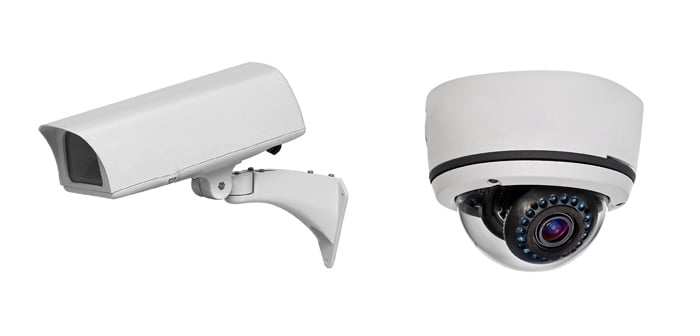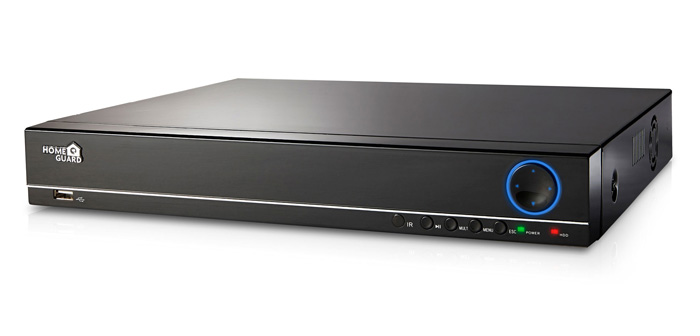Our Aim
To provide you with an overview on New And existing technologies, hopefully helping you understand the changes in the technology. Together with the overviews we hope to bring topical issues to light from a series of independent reviewers saving you the time And hassle of fact finding over the web.
We will over time provide you with quality content which you can browse and subscribe to at your leisure.
TekSpek 's

Office IP Security camera systems
Date issued:
The need for enhanced security goes hand in hand with business growth. Small businesses, often characterised by one-man bands, are, in technology terms, usually run from nothing more than a basic laptop. Increasing the head count to 20 in an office environment brings with it challenges with respect to data and asset security. Corporate security, defined as the need to look after a company's tangible assets, takes on renewed focus in the Internet age where a missing laptop, chock-full of sensitive data, can spell real trouble.
This is why many medium-sized companies are turning to surveillance to keep their assets under guard. In particular, IP surveillance has gained strong momentum in this area. This TekSpek examines what IP surveillance is, how it works, and how it can protect your company. Corporate security is built on three cornerstones: cameras, networking capability and centralised storage. We cover each of these in turn and suggest what you need to look out for.
The Corporate Camera Conundrum
There is more to choosing a corporate camera than first meets the eye. Do you want fixed-position cameras; those that tilt, pan or zoom; is there a real need for them to be tamper-proof and resistant to inclement weather, perhaps? Then there's the question of whether they should be standard cameras or of a fixed-dome design? And it's important to realise that while you can mix and match cameras in a setup, the performance of the cheapest one dictates the lowest level of quality.
We would recommend that potential customers invest in cameras that are able to record at a minimum 720p resolution; anything lower runs the risk of being unusable for identification purposes in low-lit environments. Look out for cameras with automatic iris control because they adjust to the ambient light conditions.
Most modern business premises are pre-plumbed with Cat 5 or Cat 6 network cabling. This is primarily laid down to enable multiple computers to be networked together through hard wiring, but such cabling has an added ancillary benefit of being able to carry both power and video through a standard called Power over Ethernet (PoE). And it pays to ensure any such compatible camera is in full adherence of the 802.3af standard. This means you can mix and match cameras from different companies yet still have a seamless surveillance experience.

The Digital Brains
So you now have the cameras in place, exactly where you want them, but still need to consider how the captured footage will be processed and accessed by the network administrator. The brains of the outfit is called the digital video recorder (DVR). It also goes by names such as centralised storage server or simply as the control box... and these are interchangeable terms for the hardware that processes and stores the footage. We'll henceforth call it the DVR to avoid confusion.
A DVR's primary function is to store the incoming data streams and have some specific software that can analyse any areas of concern. The feeds can often arrive from multiple cameras simultaneously, with up to 100 channels covered, so the processing power required increases in direct correlation to the number of cameras inputs that need monitoring in real-time. Premium DVRs have dedicated hardware that offloads most of this processing might from the general-purpose CPU.
Advanced DVRs also have the ability to control each camera from a central hub through the use of pan/tilt/zoom (PTZ) functions baked into the software itself. The enormous amount of data generated by multiple cameras requires on-the-fly compression before it arrives at the DVR's storage, and in 2016 this most commonly takes the form of H.264 encode and decode. Future DVRs will offer even better support by cutting the amount of data roughly in half by using the H.265 codec that's born from the need to transmit 4K datastreams from the web to modern televisions.
Clever DVRs tend to use some form of smart recording, where continuous recording uses a low-resolution stream in order to save the storage from being filled quickly. This switches to a high-resolution stream as soon as any motion is detected. What's more, you can schedule recordings and be notified of any discrepancies through smartphone alerts or emails. Being web-based means that the IP security system's footage can be accessed anywhere there's an Internet connection - handy if you're away from the office environment.
Playback and general surveillance is usually based on an easy-to-use, easy-to-configure browser system. Good software enables the user to preview recordings via thumbnails while also controlling the playback speed. Zooming, intelligent video analytics and real-time watermarking are also features commonly seen.

Storage Sense
DVR units also vary in the quantity and quality of storage employed. For example, you can have the storage drives inside the same server that does the processing, or it can be somewhat remote by using network-attached storage (NAS) or storage-attached networks (SAN). Medium-sized companies can often make do with DVR-attached storage because a typical premium unit can hold multiple 6TB drives, which is more than ample capacity for all but the most esoteric of IP camera solutions.
The always-recording nature of DVRs has resulted in the development of specific, focussed storage drives whose reliability is improved over standard drives you would use in a regular PC. These drives are also sometimes used in NAS units where continuous, heavy access is the norm rather than the exception. To be clear, it's the reliability rather than the speed that is important in this regard, because well-compressed 1080p stream barely uses 2MB/s of bandwidth. Even 20 cameras, running concurrently, would not tax the speed limits of the most basic mechanical drives.
These surveillance drives focus on low-power operation, support for 32 camera streams, and ability to use at least eight in one DVR unit. Do understand that their raw performance and specifications are some way behind true enterprise-specific drives; surveillance models are almost always lower cost. With that out of the way, the two dominant players are WD and Seagate with their Purple and Surveillance models, respectively. Available in up to 6TB capacities at a lower cost than their enterprise cousins, you would be remiss to use anything else.
Building an effective IP camera surveillance system for a business environment needs careful planning. You need to decide on the right camera(s) for the job, appreciate the best way to connect them, and then consider the kind of storage server that best fits in with your needs. Should the actual storage be local, network-attached, or even off-site is worth pondering, too, as is the feature-set required from a web-based recording and playback system. Finally, you need to understand that long-term usage requires the right hard drives.
Scan Computers has a broad range of solutions for corporate security. From the smallest business to 100,000-square-foot warehouses, we have you covered. Head on over to here to peruse our professional selection.